January 2023 Invasive Species
This month’s article will be rather brief in terms of the number of plants discussed. I will not be discussing how to grow or where to acquire invasive plant species. I am interested in simply bringing to your attention some of the more significant invasive plants in our area, what we can do about them, and their pros and cons.
Fairhope City Ordinance No. 1444, Sec. 10.5-16 defines the following plants as “… exotic species…” or more commonly referred to as invasive species. As such, these are not plants you want to plant in your yard.
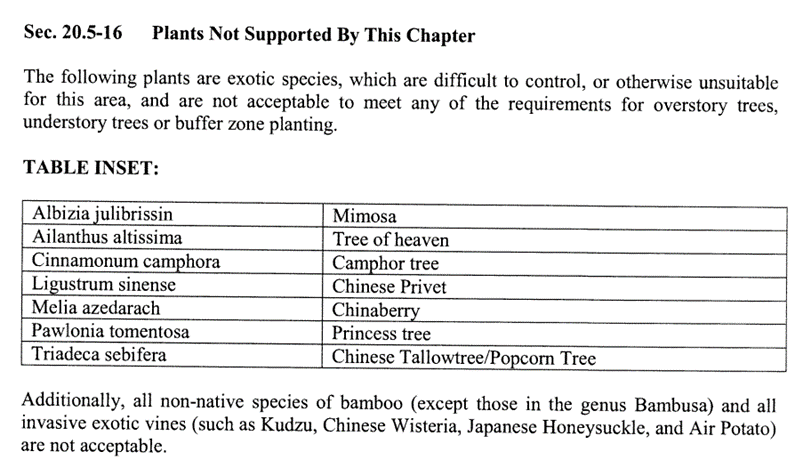
It should be noted that is not an all-inclusive list of invasive species for our area. If you have a plant that you feel might be an invasive species, you may contact a certified arborist in our area – a reputable tree service company probably has one on their staff. You may also contact the Auburn Extension Service for Baldwin County or call them at (251) 937-7176 and they can help identify invasive species.
It should also be noted that there are good aspects to many of these species which I will attempt to point out.
MANY OF THE INVASIVE PLANTS CAN BE EATEN IN PART OR USED FOR MEDICINAL PURPOSES, HOWEVER, UNDER NO CIRCUMSTANCE SHOULD YOU TRY THIS! FIND AN EXPERT IN THIS AREA BEFORE YOU EVEN THINK ABOUT INGESTING PART OF A PLANT YOU ARE NOT FAMILIAR WITH.
Camphor Tree
First, let’s look at the Camphor tree. The tree, at maturity, will be 50-60 feet in height and even reach 100 feet. A specimen tree may have a wide crown and provides a dense shade. The roots are shallow and can damage and crack a sidewalk, road or other infra structure. It has glossy green leaves and black drupes which birds readily eat and spread the seeds all over the area. It easily sheds limbs and may have over 100,000 seeds in a year which the birds readily eat. The trees may live 50-150 years and the oldest ones are in China, Japan, etc. where some are known to have lived to 1,000 years. I have a few that are over 70 feet tall and have dead trees which are culled by a local sawmill. The base of some of the trees are 2-2.5 feet in diameter. It h as been said that to get rid of the tree make it a centerpiece of your landscaping and it will die forthwith!
It is used for camphor production, lumber which has a very decorative pattern – see the coffee table below which came from a dead camphor tree from my farm and other uses. In general, I like them at the farm out in the field but would never have any at my house!
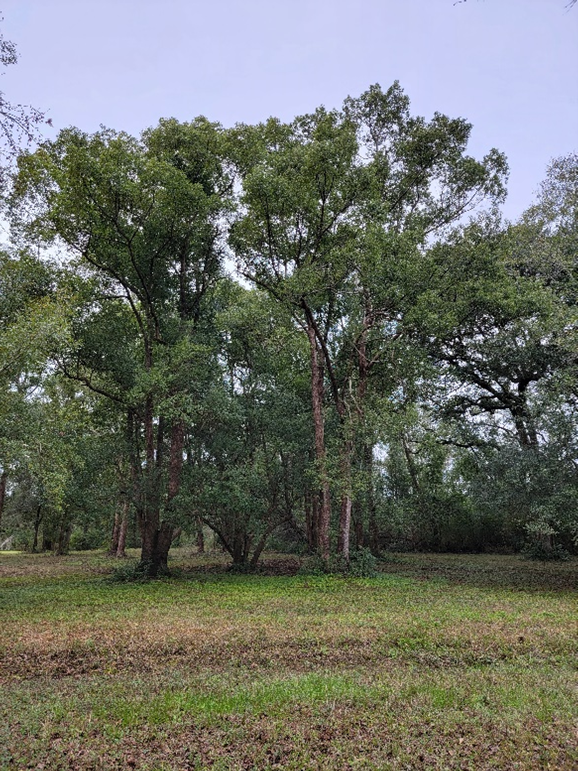
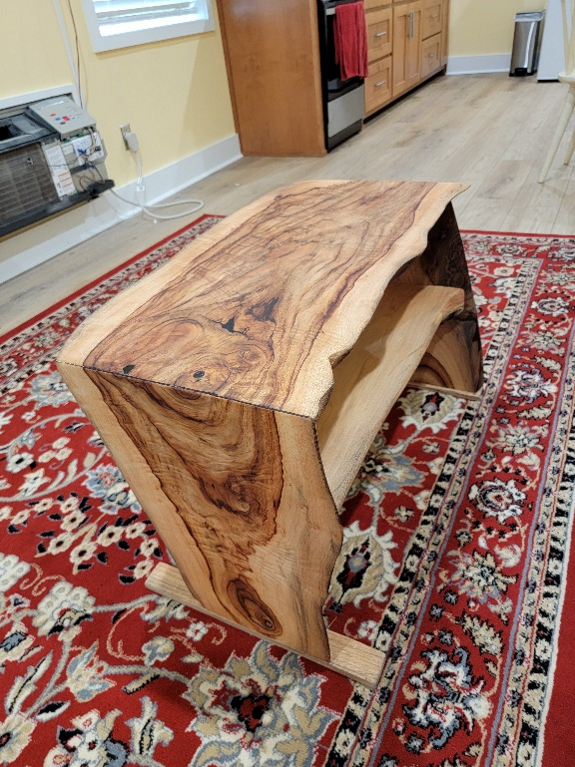
An interesting article on camphor wood.
Chinese Privat
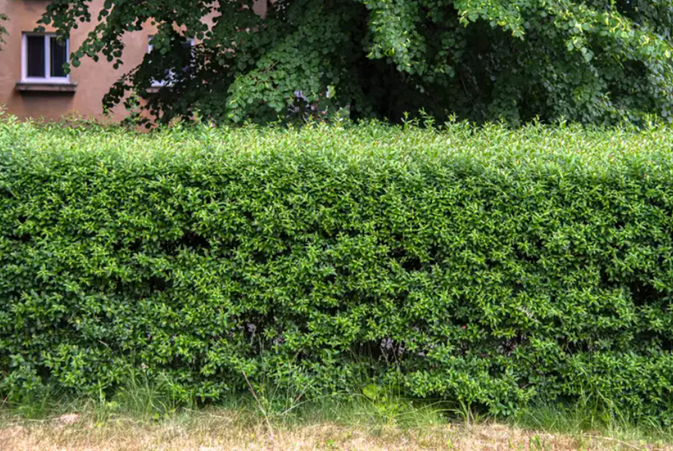
Figure 3: The Spruce / Evgeniya Vlasova
One of the worse invasive species in our area. It was brought to the US from China for ornamental uses in the mid-1850s. However, it is so bad that it is listed on the National Invasive Species list and is a type of ligustrum. It is used in landscaping as a hedge. The major issue with shrub is its ability to rapidly take over an area. Once established in a forest it will take over choking out all other native seedlings. It spreads via its small black seeds and roots. The best way to get rid of it is to mechanically pull the whole plant up. You can also use glyphosate – use a 41% product and follow the label directions. The glyphosate can be used as a foliar, cut stump and basal bark treatment. There are other herbicides that can be used as well such as Garlon 3A, Element 4, etc. Chinese Privat has little to no ecological value. Even the flowers are low in nutrients and bees and birds which ‘eat’ them become malnourished!
It is available in some areas in a garden center – if you see it run, don’t walk away from it. It should be mentioned however, there are about 50 species of Ligustrum and not all are as invasive as the Chinese private! However, for a hedge you might want to consider inkberry or blackkhaw viburnum – both are native to the US.
Persian Silk Tree
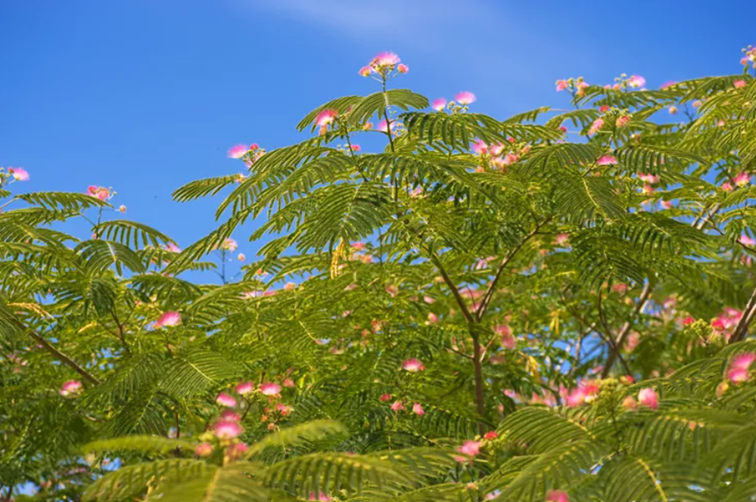
Figure 4: The Spruce / Evgeniya Vlasova
Commonly called Mimosa which is a great pollinator. It originated in Iran and was brought to Europe and then to the US in the in 1785 to Charleston. The tree, in the summer provides a dappled shade with fuzzy white/pink flowers. Of the invasive species we have mentioned, this tree is edible and has extensive medicinal properties. The bark can be used as a tincture, a mood enhancer, remedy for muscular discomfort and swelling. The leaves can be dried and used as a tea. The Mayans, for over 1,000 years, used it to help heal lesions and wounds. The list goes on and more information may be found here.
A major issue with the tree is that after the beautiful flowers die you are left with hundreds of brown seed pods that will last all winter. Further, the seed will scatter all over the neighborhood and presto, you have mimosas in the sidewalk cracks, in the fences, in your flower beds, and on and on. The tree will, in the summer, possibly suffer from wilting and the branches turn brown and die. The cure is to cut the tree down and get rid of it. The tree has a short lifespan of about 20 years, subject to many pests and will die for most any reason. Do not plant near an infrastructure as the root system will break up driveways and other infrastructure. Further, the shade will kill the underlying grass.
A very interesting and useful tree but do not plant it in your yard and under no circumstance try its medicinal and food properties!
Chinese wisteria
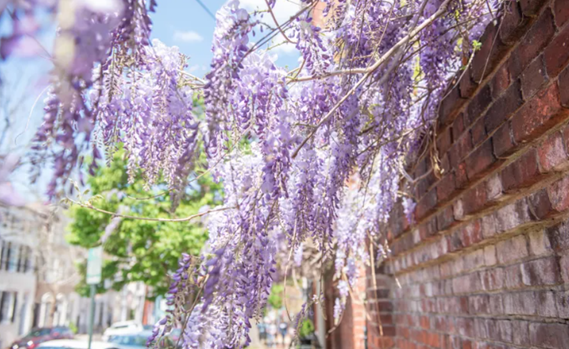
Figure 5: The Spruce / Loren Probish
A beautiful twining growth vine with stunning pendulant clusters of purple or white flowers. It was introduced to the US from China in the 1800s as an ornamental plant. From my childhood, we had two tall pine trees which had wisteria (probably the Chinese wisteria) growing up the trunks and when they bloomed, they were stunning pillars of purple.
But this is their problem; they will climb and cover most any tree and take over the tree possibly choking it out. At my farm in Barnwell when I bought it, I had rather large growths of Chinese wisteria that had taken over several oak trees. I could not get my bush hog into the area to clear the property. Finally, after mechanically removing the vines and applying an herbicide to the base of the vines, after a couple of years they were, essentially, removed. Some of the vines I removed were 50 feet and more in length. The vines can climb under siding, onto roofs and gutters and they are rather long lived – 50 or more years. The longer they live the heaver they become and the more damage they can cause. It requires a very attentive maintenance plan to keep them under control. If you start a wisteria from scratch do not be surprised that they do not bloom for several years – this is normal! I had one I planted, and it took five years to start blooming.
Be aware that all parts of this vine are toxic if ingested. One exception are the flowers which can be used in cooking. You may find online wisteria teas, cookies and more. Have you ever heard of a Blueberry Wisteria Whisky Sour?
There is a native wisteria, American Wisteria, that has very few of the problems of the Chinese, or Japanese, wisterias.
Summary
In summary – I have tried to introduce you to a variety of invasive species from tall hardwood trees, to spreading softwoods, from shrubs to vines.
Again, it should be noted that is not an all-inclusive list of invasive species for our area. If you have a plant that you fell might be an invasive species, you may contact a certified arborist in our area – a reputable tree service company probably has one on their staff. You may also contact the Auburn Extension Service for Baldwin County or call them at (251) 937-7176 and they can help identify invasive species.
MANY OF THE INVASIVE PLANTS CAN BE EATEN IN PART OR USED FOR MEDICINAL PURPOSES, HOWEVER, UNDER NO CIRCUMSTANCE SHOULD YOU TRY THIS! FIND AN EXPERT IN THIS AREA BEFORE YOU EVEN THINK ABOUT INGESTING PART OF A PLANT YOU ARE NOT FAMILIAR WITH.
You MUST realize that some invasive species are toxic and even deadly while others have been used for food and medicinal purposes over the centuries.